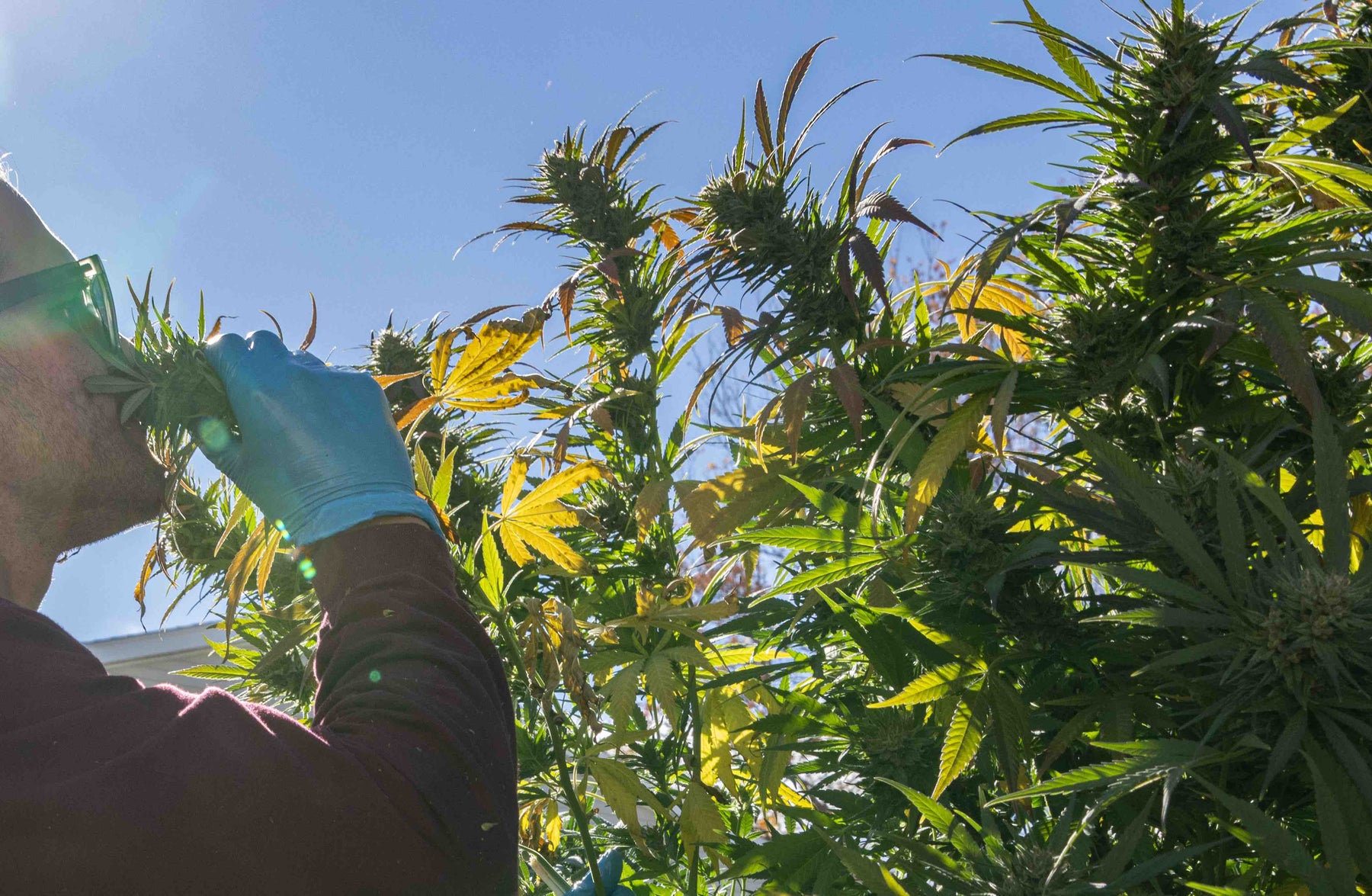
Mold on Weed: Can You Remove It & How to Prevent It
It’s a gut-wrenching moment for any cannabis user or grower: finding fuzzy white spots or a musty smell on your flower. This isn't just disappointing; it's a serious health risk. While the legal industry improves consumer safety, moldy weed is still a real concern. You might be tempted to find a quick way to remove mold from weed, but that can be dangerous. Consuming mold or mildew can lead to serious health issues. We’ll explain how to identify the problem and the correct, safe way to handle it to protect your health.
As legal cannabis cultivators, we are responsible for delivering safe, reliable products. In this post, we’ll discuss how to prevent one of the most severe issues plaguing growers - mold. You’ll learn how to avoid the environment where mold thrives and what to do if you spot the bacteria developing on your precious plants.
Why Mold Prevention is Crucial
Beyond just looking unappealing, mold is a direct threat to your entire cultivation project. It can ruin the quality of your harvest and, more importantly, pose serious health risks to anyone who consumes the final product. Think of mold prevention not as an extra chore, but as a fundamental part of responsible growing. A proactive approach saves you from the heartache of losing plants and ensures the cannabis you produce is clean and safe. The best defense starts from the very beginning, by selecting robust genetics designed for resilience. Choosing high-quality, vigorous seeds or clones gives your plants a head start in fighting off potential pathogens, setting the foundation for a healthy, mold-free grow cycle from germination to harvest.
Effects on Cannabis Potency and Yield
When mold like powdery mildew takes hold, it's essentially competing with your cannabis plant for survival. This fungal disease saps the plant's energy and nutrients, which can stunt growth and significantly reduce your final yield. According to experts, powdery mildew "lowers how much cannabis you can harvest and can make your product less pure and strong." The fungus can cover leaves and buds, blocking light and hindering photosynthesis. Even worse, it degrades the valuable cannabinoids and terpenes that determine the flower's potency, aroma, and flavor. What you're left with is a diminished, less effective product that doesn't reflect the hard work you put in.
Health Risks of Consuming Moldy Cannabis
Let's be direct: consuming moldy cannabis is a bad idea. While it might not be fatal for a healthy person, the potential health consequences are not worth the risk. As cultivators, we have a duty to ensure our final product is safe for consumption, whether it's for personal use or for the market. Inhaling mold spores can introduce harmful pathogens directly into the respiratory system, leading to a range of issues from mild irritation to severe infections. According to Healthline, "Even though it probably won't kill you, smoking moldy cannabis is not a good idea." This is a baseline of safety that every grower should respect.
Symptoms for Healthy Individuals
Even if you have a robust immune system, consuming moldy cannabis can make you feel sick. The most common reactions are respiratory irritation and gastrointestinal distress. You might find yourself with a persistent cough, an upset stomach, or you could even vomit. These symptoms arise from your body's natural response to inhaling or ingesting mycotoxins—toxic compounds produced by certain types of mold. While these effects are typically temporary, they are unpleasant and entirely avoidable with proper cultivation and curing practices.
Risks for People with Mold Allergies
For individuals with a mold allergy, the risks of consuming contaminated cannabis are much higher. Their immune systems can overreact to the presence of mold spores, triggering a more intense allergic response. Symptoms can include sinus pain, a runny or stuffy nose, and wheezing, similar to a severe seasonal allergy attack. This can be incredibly uncomfortable and potentially lead to more complicated sinus or respiratory issues. It’s a critical reminder that the cannabis you grow could affect someone with sensitivities differently than it affects you.
Severe Risks for Immunocompromised Individuals
The danger escalates dramatically for people with compromised immune systems or pre-existing respiratory conditions like asthma. For this vulnerable group, inhaling mold spores from cannabis can be incredibly serious. It can lead to dangerous lung infections, such as aspergillosis, which can be difficult to treat. In the most severe cases, these infections can spread from the lungs to other parts of the body, including the brain. This underscores the absolute necessity of maintaining a mold-free environment, as the consequences for some consumers can be life-threatening.
How to Prevent Mold on Your Weed
Mold and mildew are microorganisms that thrive in damp, humid environments with poor air circulation. As a result, your grow room must be stable if you want to prevent mold.
Start with Mold-Resistant Strains
While the environment causes mold, some strains are more resilient than others. You can prevent many cases of mold if you choose cannabis seeds with solid genetics.
Control Humidity and Temperature
Keep your humidity and temperature levels consistent and in the range that suits your grow. Most strains prefer a relative humidity between 55% and 65% and a temperature between 60°F and 80°. However, every strain is different and requires a curated grow environment to develop without the presence of mold.
Adjusting Humidity by Growth Stage
Your plant’s humidity needs will change throughout its growth cycle. Seedlings and clones thrive in high humidity, around 65-70%, because their root systems are still developing and can't draw up much water yet. As your plants enter the vegetative stage, you can gradually lower the humidity to a range of 40-60%. The most critical adjustment comes during the flowering stage. To prevent dense buds from trapping moisture and developing bud rot, you must lower the relative humidity to 40-50%. Keeping a close eye on these levels and adjusting them with humidifiers, dehumidifiers, and fans is a key step in proactive mold prevention.
Preventing Cross-Contamination
A clean grow space is a healthy grow space. Mold spores can easily travel on your clothes, tools, or hands, so it’s vital to practice good hygiene. Always wash your hands before handling your plants and regularly clean your equipment, like pruning shears, with isopropyl alcohol. Proper air circulation is also non-negotiable; use oscillating fans to keep air moving around your plants, which prevents moisture from settling on the leaves and buds. Starting with a sterile environment, including fresh soil and sanitized pots, gives your plants the best defense against contamination from the very beginning.
Improve Airflow with Smart Pruning
All cannabis plants need proper spacing. Generally, you need between two and four feet between each plant. Again, this depends on how the strain grows and your grow method. The most important thing is to ensure airflow.
You also need to regularly prune your plants to ensure all areas have airflow access and don’t become hotbeds for mold.
What Does Mold on Weed Look Like?
Unfortunately, mold happens, but if you catch it early on, you may still be able to save the crop. Follow the tips below to defeat mold and mildew before they become significant issues.
- Early Detection – Regular plant inspection with a magnifying glass will help you spot mold early on.
- Grey vs White Mildew – Look for the two types of mold: grey and white. Grey mold is most common and usually shows up in late flower or drying. White mold is powdery and traditionally found early on in patches.
- Monitoring Systems – Implement a regular monitoring system to ensure your plants get adequate attention. This includes looking for mold and monitoring humidity, temperature, and airflow.
Identifying by Smell
Often, your nose will detect a problem before your eyes do. Healthy, properly cured cannabis has a rich and complex aroma, thanks to its terpene profile. It might smell earthy, sweet, citrusy, or gassy, but it should always smell fresh. In contrast, moldy cannabis often smells musty, like a damp basement, mildew, or even old hay. If you open your jar or enter your drying room and the scent is off-putting or reminds you of wet laundry left in the machine too long, it’s a major red flag. Trust your instincts; a pungent, unpleasant odor is one of the clearest signs that mold has taken hold of your harvest.
Identifying by Appearance
If a strange smell has tipped you off, your next step is a close visual inspection. Mold can manifest in a few different ways, but it generally looks out of place on the plant. According to Healthline, "Mold usually looks like a grayish-white powder or fuzz." You might see fuzzy white patches, dark spots, or even slimy textures deep within the dense parts of the bud. Powdery mildew will appear as white, flour-like spots on the leaves, while grey mold (Botrytis) often looks like cobwebs or cottony fibers, turning the plant material grey and mushy. Use a magnifying glass and good lighting to carefully inspect the nooks and crannies of your buds, as mold loves to hide where moisture gets trapped.
Distinguishing Mold from Trichomes
For new growers, it can be easy to confuse mold with a heavy coating of trichomes. However, there are clear differences when you know what to look for. Trichomes are the tiny, crystal-like glands that cover healthy cannabis flowers, giving them a frosty, sparkling appearance. These are the resin glands that produce cannabinoids and terpenes, making the buds sticky to the touch. Mold, on the other hand, is a foreign growth. It’s dull, not sparkly, and appears as a powdery or web-like layer on the surface of the bud. High-quality THCA seeds are bred to produce an abundance of shiny trichomes, so getting familiar with what a healthy, frosty plant looks like is your best defense.
How to Treat Mold on Growing Plants
Finding mold on your plants can feel like a gut punch, especially after you’ve put so much care into your grow. But don't panic. If you act quickly and correctly, you can often manage the issue and save your crop from further damage. The key is to use the right tools for the job and to be diligent with your treatment plan. Let's walk through the most effective ways to handle a mold outbreak and get your plants back on the path to a healthy harvest.
Why DIY Remedies Are Not Effective
When you spot mold, it’s tempting to search for a quick fix using household items. You’ll find plenty of online discussions about using things like baking soda to combat powdery mildew. While it’s true that baking soda has some antifungal properties, it’s rarely a match for a serious infestation. Many experienced growers report that these home remedies are simply not reliable enough to fully eradicate the problem. Relying on a DIY solution can be a gamble that allows the mold to spread, potentially ruining your entire crop and wasting all your hard work.
Properly Applying Fungicides
For a more dependable solution, turn to commercial fungicides formulated specifically for plants. Products like these are designed to effectively get rid of powdery mildew and other common molds without harming your cannabis. The most critical part of using these treatments is following the instructions to the letter. For example, some manufacturers advise applying a concentrate every 72 hours until the mold is gone, followed by a weekly maintenance dose to prevent its return. Correct and consistent application is your best defense for stopping mold in its tracks.
Can You Remove Mold from Weed?
Follow the steps below when you encounter mold on your plants.
- Isolation of affected plants
- Safe disposal of contaminated plant material
- Cleaning and sterilization of cultivation space
- Use of natural or chemical treatments to eliminate mold
Why It's Unsafe to Salvage Moldy Buds
When you spot mold on your harvested buds, your first instinct might be to try and save the batch by cutting away the affected areas. Please don’t do this. Mold spreads through tiny, invisible spores, meaning that even if you can only see it on one part of a bud, the entire thing is likely contaminated. Attempting to salvage it is not worth the risk. Not only will the mold ruin the flavor and aroma of your cannabis, but more importantly, inhaling mold spores can lead to respiratory issues and other health problems. The only safe move is to discard any cannabis that shows signs of mold growth to protect your health.
A Warning About Botrytis (Gray Mold)
One of the most common culprits you'll encounter is Botrytis cinerea, also known as gray mold. It appears as a fuzzy, grayish-white growth that can quickly overtake your buds, especially in humid conditions. It’s crucial to understand that there is no safe level of mold on cannabis. If you identify gray mold, or any mold for that matter, the product is no longer safe for consumption. Trying to dry it out or treat it won't eliminate the potential health risks. Your commitment to safety means accepting the loss and disposing of the entire contaminated batch to protect yourself and anyone else who might use it.
Proper Storage to Prevent Mold After Harvest
Getting your plants through the cultivation cycle is a huge accomplishment, but the work isn’t over yet. How you dry, cure, and store your cannabis is just as important as how you grow it. In fact, improper storage is one of the leading causes of mold growth after harvest. After putting so much care into growing your premium cannabis seeds, the last thing you want is to lose your final product to something entirely preventable. By creating the right storage environment, you can protect your buds, preserve their potency and terpene profile, and ensure they remain safe to consume for months to come.
Use Airtight Glass Containers
The best way to store your cured cannabis is in airtight glass jars, like Mason jars. Glass is ideal because it’s non-porous and won’t leach any chemicals or affect the flavor of your buds. An airtight seal is critical because it prevents excess oxygen and moisture from getting in, which are two of the main ingredients mold needs to grow. Avoid storing your cannabis in plastic bags or containers, as they are not fully airtight and can trap moisture, creating a perfect breeding ground for mildew and mold. Filling your jars about three-quarters full helps maintain a stable environment without crushing the delicate trichomes.
Store in a Dark, Dry, and Cool Place
Once your cannabis is sealed in airtight jars, where you keep them matters. Light, heat, and moisture are the enemies of well-preserved cannabis. Exposure to direct sunlight or high temperatures can degrade cannabinoids and terpenes, reducing the quality and potency of your harvest. To prevent this, store your jars in a cool, dark, and dry location, such as a closet or a cabinet. Aim to keep the temperature consistently below 77°F (25°C). This simple step not only helps in preventing mold but also goes a long way in maintaining the integrity of the flower you worked so hard to cultivate.
Maintain Ideal Humidity Levels
Controlling humidity inside your storage jars is the final piece of the puzzle for preventing mold. The ideal relative humidity (RH) for storing cannabis is between 59% and 63%. This range is perfect because it’s moist enough to keep the buds from becoming overly dry and brittle, but not so moist that it encourages mold growth. An easy way to achieve this is by using two-way humidity control packs, which are designed to automatically add or remove moisture to maintain a specific RH level. Simply add the correct-sized pack to each of your jars to create a stable microclimate that preserves the quality and safety of your harvest.
Grow Mold-Resistant Plants with Trilogene Seeds
Choosing mold-resistant strains with strong genetics is the first line of defense against mold. While you’ll still need to execute best cultivation practices, you’ll be much better off fighting mold if you start off with our cannabis seeds.
Frequently Asked Questions
I'm a new grower. How can I be sure I'm looking at mold and not just frosty trichomes? This is a great question, and it's a common point of confusion when you're starting out. Trichomes are the sparkly, crystal-like glands that make your buds look frosty and feel sticky—this is where the good stuff is. Mold, on the other hand, looks dull and out of place. It often appears as a dusty white powder, like flour, or as fuzzy, web-like fibers. If you see patches of grey or white fuzz, especially deep inside the bud, you're likely looking at mold, not a healthy coat of trichomes.
Is it really that bad to just cut the moldy spot off a bud and use the rest? I know how tempting it is to try and save your harvest, but please don't do this. Mold spreads through microscopic spores that you can't see. By the time you spot a visible patch of mold, the entire bud and likely others nearby are already contaminated. Trying to salvage it just isn't worth the serious health risks. The only safe and responsible choice is to discard any flower that shows signs of mold.
My humidity and temperature seem right, but I still found mold. What else could be the cause? It's frustrating when you think you've done everything right and still run into problems. While humidity and temperature are huge factors, stagnant air is another major culprit. If air isn't circulating freely around and through your plants, pockets of moisture can get trapped, creating a perfect breeding ground for mold. This is why proper plant spacing and regular pruning to open up the canopy are so important. It ensures every part of the plant can breathe.
I found mold on my plants before harvest. Are commercial fungicides actually safe to use on cannabis? When you're dealing with an active mold problem on growing plants, a commercial fungicide designed for horticulture is your most reliable option. These products are formulated to target the fungus without harming your plants, but the key is to use them correctly. Always choose a product that is rated for use on consumable plants and follow the application instructions precisely. This includes when to apply it, how often, and, most importantly, when to stop using it before harvest to ensure a clean final product.
Does choosing a 'mold-resistant' strain mean I don't have to worry as much about my grow environment? Starting with strong, mold-resistant genetics gives you a significant advantage, but it doesn't make your plants invincible. Think of it as giving your plants a stronger immune system from day one. They'll be better equipped to fight off potential issues, but they still need a clean, healthy environment to thrive. You still need to manage your humidity, ensure good airflow, and practice smart pruning. Combining great genetics with great growing practices is the best way to ensure a successful, mold-free harvest.
Key Takeaways
- Prioritize prevention with smart cultivation: Your best defense against mold is a proactive one. Start with resilient genetics and meticulously manage your grow room's humidity, temperature, and airflow to create an environment where your plants flourish and mold can't take hold.
- Trust your senses and prioritize safety: Learn to identify mold by its musty smell and fuzzy, web-like appearance, which is distinct from shiny trichomes. If you find mold on harvested buds, the only safe course of action is to discard the entire contaminated batch to avoid serious health risks.
- Protect your harvest with proper storage: Your job isn't done after cutting down the plants. Preserve the quality and safety of your flower by curing and storing it in airtight glass jars. Keep them in a cool, dark place and use humidity packs to maintain a stable 59-63% RH.
Related Articles
Featured collection
-

Auto Glu CBD Seeds
Original price $20.00 - Original price $175.00Original price$20.00 - $175.00$20.00 - $175.00Total Price: $20.00Parent Strains: Auto Alpha x Purple Thai Cannabinoid Profile: CBD Dominant Potential THC:CBD Ratio: 30:1 *Pre-Harvest CBD: 9.35%, THC: 0.24% *Post-...
View full details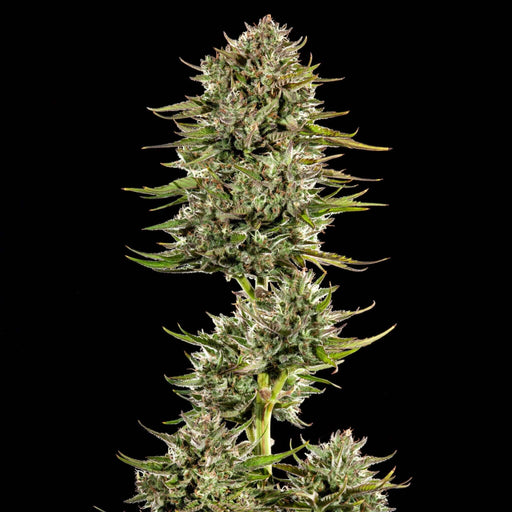
Auto Face Gas Feminized Cannabis Seeds
Original price $15.00 - Original price $350.00Original price $15.00 - Original price $350.00Original price $50.00$15.00 - $350.00$15.00 - $350.00Total Price: $15.00Parent Strains: Gorilla Glue x OG Cannabinoid Profile: THC Indica-Dominant Hybrid Potential CBD: THC Ratio: 25:1 *Post-Harvest CBD: 0%, CBG...
View full details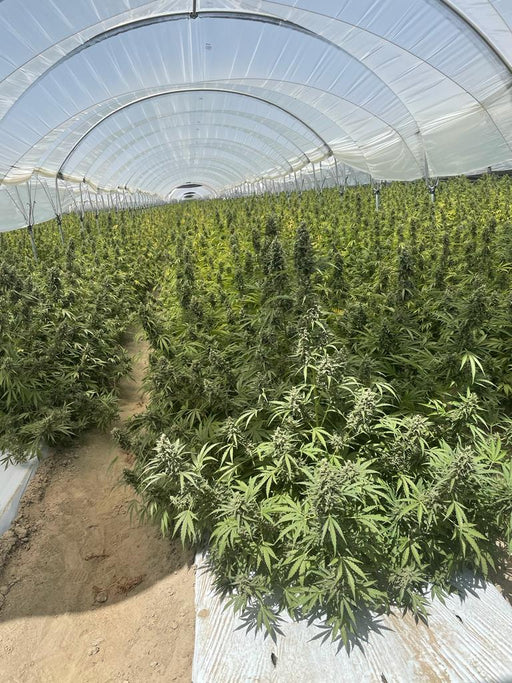
Auto EZ Bake Feminized Cannabis Seeds
Original price $15.00 - Original price $350.00Original price $15.00 - Original price $350.00Original price $50.00$15.00 - $350.00$15.00 - $350.00Total Price: $15.00Parent Strains:¬†Sour Auto X Cookie Dog Cannabinoid Profile:¬†THC Indica-Dominant Hybrid Potential CBD: *Post-Harvest¬†CBD:¬†0%,¬†CBD:¬†1%,¬†THC:¬...
View full details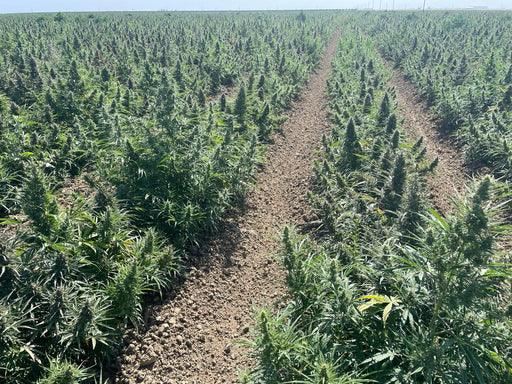
Auto Magik CBD Seeds
Original price $30.00 - Original price $175.00Original price $30.00 - Original price $175.00Original price $30.00$20.00 - $175.00$20.00 - $175.00Total Price: $20.00Parent Strains: Auto Magik x Auto Magik Cannabinoid Profile: CBD Dominant Auto Flower Potential CBD:THC Ratio: 20-25:1 CBD Content: 6%-10% Aroma: S...
View full details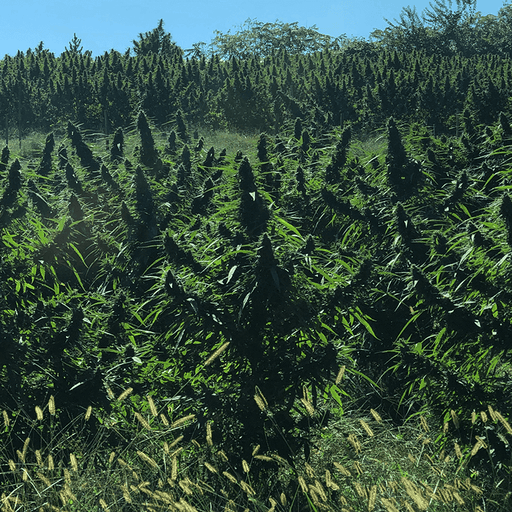
Auto Alpha CBD Seeds
Original price $30.00 - Original price $175.00Original price $30.00 - Original price $175.00Original price $30.00$20.00 - $175.00$20.00 - $175.00Total Price: $20.00Parent Strains: Auto Alpha x Auto Alpha Cannabinoid Profile: CBD Dominant Auto Flower Potential CBD:THC Ratio: 20-25:1 CBD Content: 6%-10% Aroma: C...
View full detailsSTAY UP TO DATE
Submit your email to get updates on products and special promotions.










